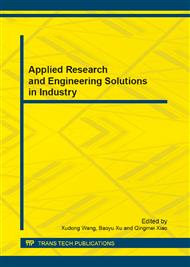p.766
p.771
p.777
p.782
p.786
p.791
p.796
p.800
p.805
Modeling and Simulation of Sensorless Control of BLDC Motor Based on Submersible Pump
Abstract:
In this paper, modeling selects sensorless control of permanent magnet brushless DC motor in terms of work condition of submersible pump under water. Motor reduced by Hall sensor so that maintenance. Motor was controlled by state space and back EMF zero-crossing in Matlab/Simulink, and constitute total simulation system along with the other modules. Eventually, motor character was estimated in accordance with waveforms of simulation, which offers foundation for the design of actual motor control system.
Info:
Periodical:
Pages:
786-790
Citation:
Online since:
February 2013
Authors:
Keywords:
Price:
Сopyright:
© 2013 Trans Tech Publications Ltd. All Rights Reserved
Share:
Citation:


